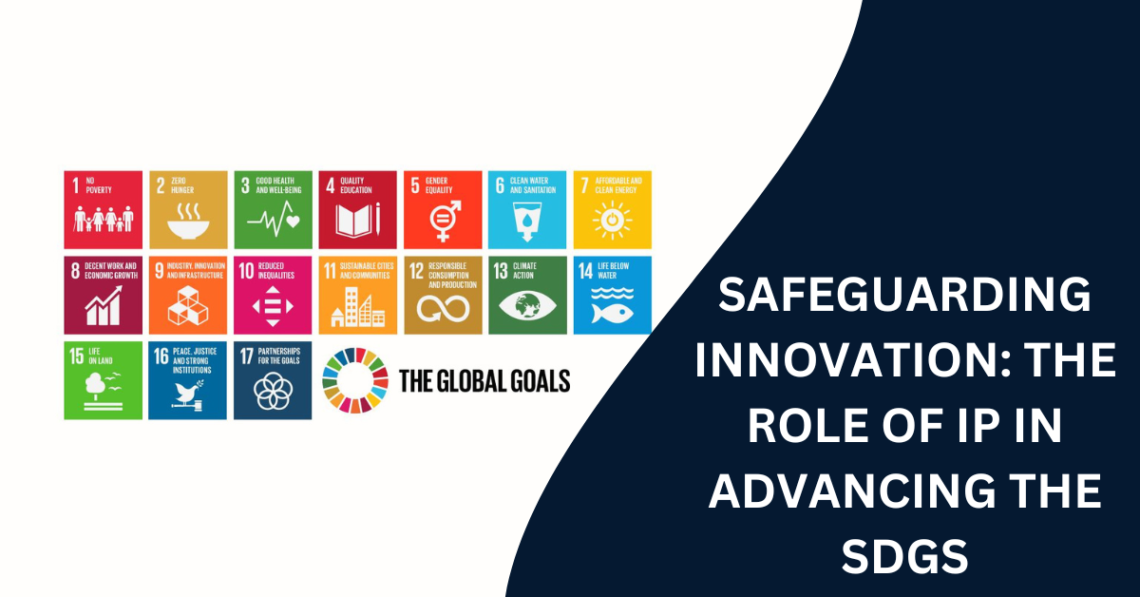
Advancing the United Nations Sustainable Development Goals (SDGs) has birthed a growing demand for inventions and innovations. As a result, safeguarding these inventions and innovations that are emerging to address the SDGs’ call to action has become essential.
The United Nations Brundtland Commission has defined sustainability as “meeting the needs of the present without compromising the ability of future generations to meet their own needs.” This definition forms the basis of the SDGs, which aim to achieve a sustainable future and Intellectual Property plays an important role in this.
Intellectual Property(IP), according to the World Intellectual Property Organization (WIPO), refers to creations of the mind, such as innovations, literary works, designs, symbols, names, and images used in commerce. WIPO classifies IP into two main categories, namely, industrial property and Copyright-related rights. Industrial Property covers patents, trademarks, industrial designs, and geographical indications, while Copyright-related rights cover literary, artistic, and scientific works, including performances and broadcasts. The laws under both categories protect creators and serve as safeguards for innovations.
The 2030 Agenda for Sustainable Development was adopted by all United Nations (UN) Member States in 2015, providing a common action plan to improve the planet for present and future generations. The parties agreed to 17 Sustainable Development Goals (SDGs) as “an urgent call for action by all countries developed and developing in a global partnership”. The SDGs aim to adopt strategies to end global poverty and inequalities whilst addressing climate change and conserving the environment.
What is the nexus between IP and SDGs?
IP rights are a catalyst for innovation. Whether it is the development of renewable energy technologies, life-saving medical treatments, or sustainable agricultural practices, IP rights ensure that innovators have exclusive rights on the usage of their creations and earn income from them.
As the world struggles with the ongoing challenge of climate change and its impact on weather patterns, food security in vulnerable regions, and public health, a demand arises for innovative technologies and solutions to tackle this crisis. IP rights’ protection empowers people to create solutions that contribute to combating climate change and its impact. This advances the cause of Goal 13 of the SDGs.
Pharmaceutical companies and biotech firms are also incentivized by the legal protection offered by IP rights to develop medicines and technologies that help fight diseases and improve healthcare. These efforts align with the objectives of Goal 3 of the SDGs, “Good Health and Well Being”.
Overall, being motivated to create and profit from inventions advances the cause of Goal 8 of the SDGs, “Decent Work and Economic Growth”. It also gives a hand to initiatives being taken to achieve Goal 1 of the SDGs, which aims to eradicate poverty.
The role of Intellectual Property in advancing SDGs can, therefore, not be underestimated as it ensures that inventors remain motivated to keep developing solutions that address global challenges.
By Akua Boatema Boakye & Nana Amma Asare-Boateng







